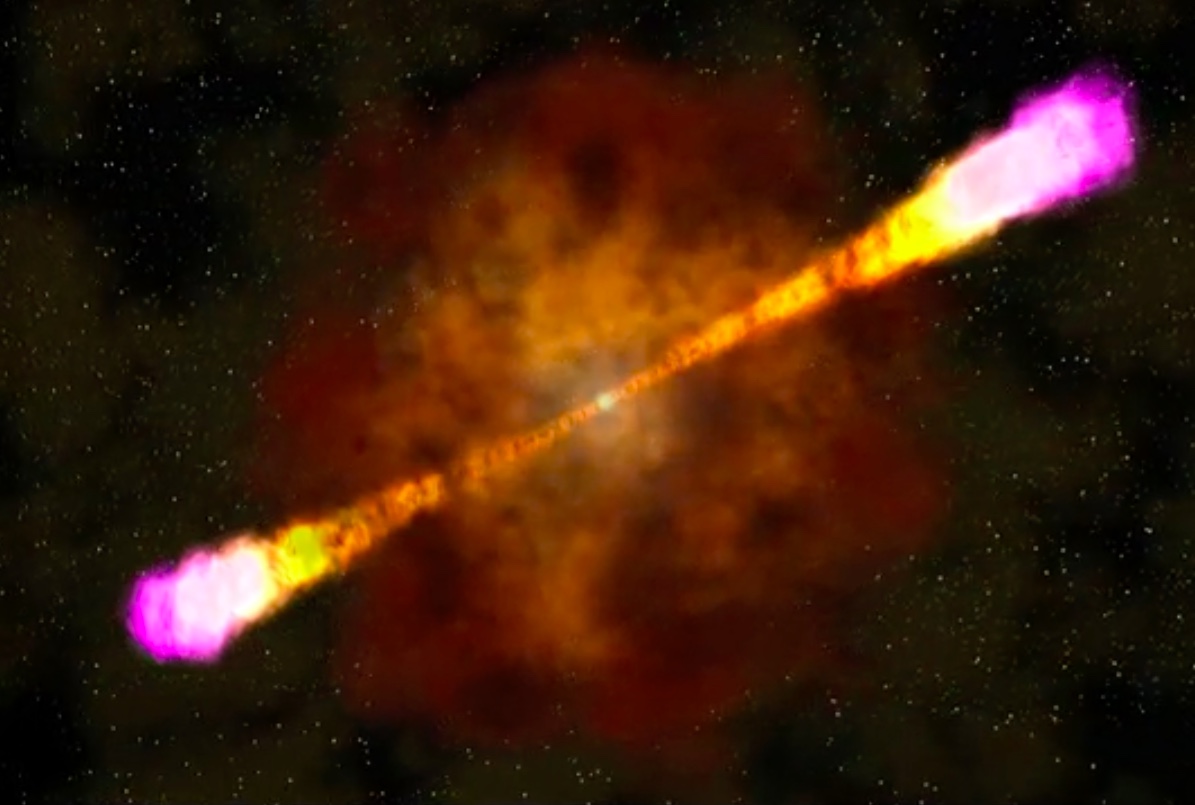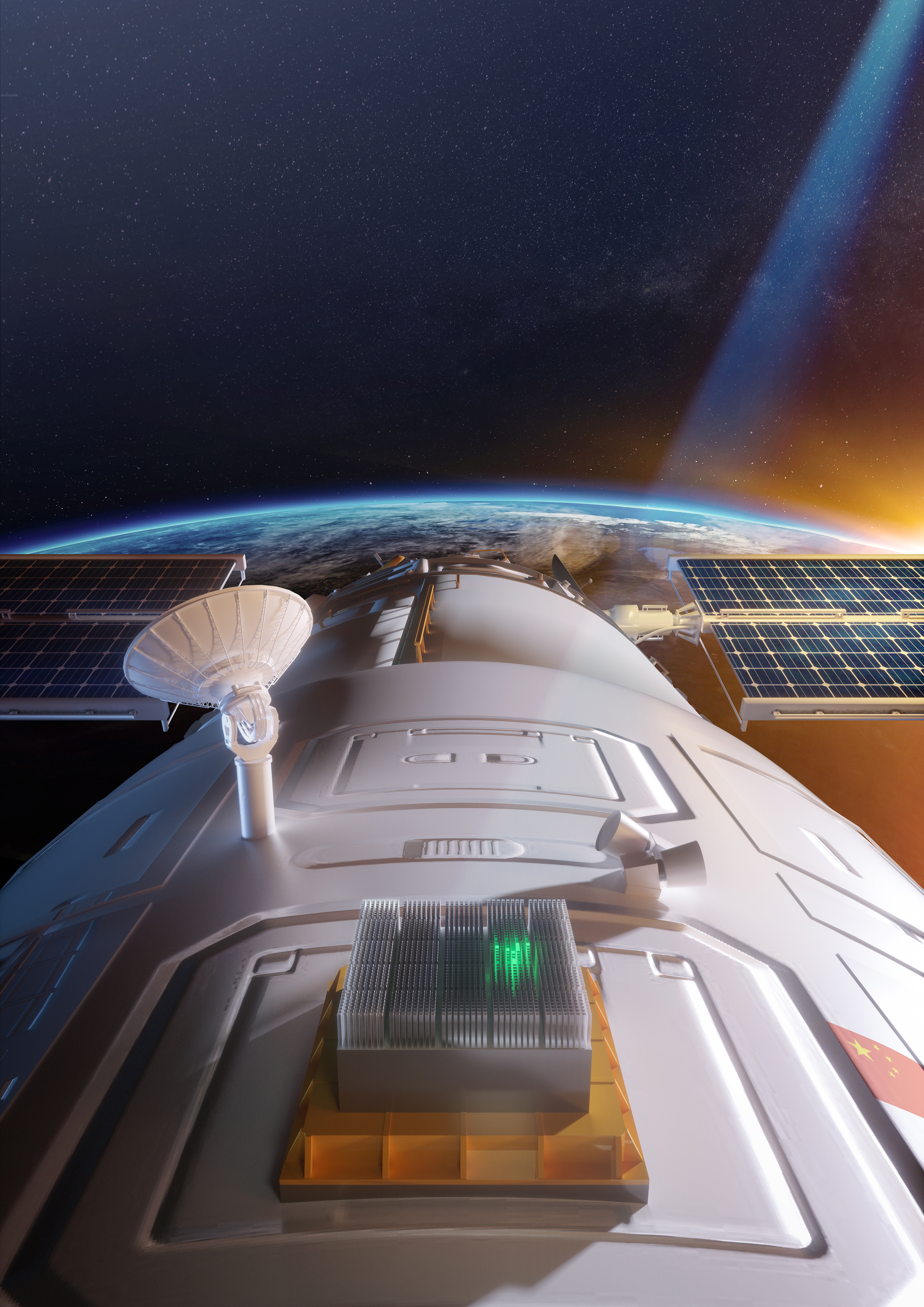The Most Powerful Explosions in the Universe are Even Stranger Than We Thought

The most powerful explosions in the universe may be even more exotic than scientists had thought.
There's a weird mix of order and chaos in the light blasted out by gamma-ray bursts (GRBs), brief but intense outbursts associated with the formation of black holes, a new study reports.
The new research shows that GRB photons tend to be polarized — that is, most of them oscillate in the same direction. But, surprisingly, this direction changes over time. [Images: Black Holes of the Universe]
"The results show that, as the explosion takes place, something happens which causes the photons to be emitted with a different polarization direction," Merlin Kole, a researcher at the Department of Nuclear and Particle Physics at the University of Geneva in Switzerland, said in a statement.
"What this could be, we really don't know," added Kole, one of the new study's two lead authors.

The most powerful GRBs are unleashed when massive stars go hypernova — an especially intense type of supernova — and then collapse to form black holes. (Astronomers think a less energetic class of GRB may flare up when two superdense stellar corpses known as neutron stars merge, forming a black hole.) These black holes emit jets of incredibly fast-moving material along their axes of rotation.
Scientists think GRB radiation is produced within these narrow relativistic jets, but exactly how that happens is unclear. More information about GRB light could help — and that's where the new study, which was published online today (Jan. 14) in the journal Nature Astronomy, comes in.
Get the Space.com Newsletter
Breaking space news, the latest updates on rocket launches, skywatching events and more!
Kole and colleagues analyzed data gathered by an instrument called POLAR, which launched to Earth orbit aboard China's Tiangong-2 space lab in September 2016 and ceased operations in April 2017.
As its name suggests, the instrument was designed to gauge the polarity of GRB light. POLAR was a square measuring 19.7 inches (50 centimeters) on a side packed with 1,600 "scintillating bars." GRB photons that hit these bars sometimes produced additional photons, leading to secondary collisions.
"If the photons are polarized, we observe a directional dependency between the impact positions of the photons," co-author Nicolas Produit, a researcher at the Department of Astronomy at the University of Geneva, said in the same statement. "On the contrary, if there is no polarization, the second photon resulting from the first collision will leave in a fully random direction."
POLAR detected 55 GRBs during its operational life. For the new study, the researchers analyzed five of the most powerful bursts. They delved especially deeply into one 9-second-long GRB, partitioning it into roughly 2-second-long "slices." It was this work that revealed the surprising polarity shift.
"We now want to build POLAR-2, which is bigger and more precise," Produit said. "With that, we can dig deeper into these chaotic processes, to finally discover the source of the gamma rays and unravel the mysteries of these highly energetic physical processes."
Mike Wall's book about the search for alien life, "Out There" (Grand Central Publishing, 2018; illustrated by Karl Tate) is out now. Follow him on Twitter @michaeldwall. Follow us @Spacedotcom or Facebook. Originally published on Space.com.
Join our Space Forums to keep talking space on the latest missions, night sky and more! And if you have a news tip, correction or comment, let us know at: community@space.com.

Michael Wall is a Senior Space Writer with Space.com and joined the team in 2010. He primarily covers exoplanets, spaceflight and military space, but has been known to dabble in the space art beat. His book about the search for alien life, "Out There," was published on Nov. 13, 2018. Before becoming a science writer, Michael worked as a herpetologist and wildlife biologist. He has a Ph.D. in evolutionary biology from the University of Sydney, Australia, a bachelor's degree from the University of Arizona, and a graduate certificate in science writing from the University of California, Santa Cruz. To find out what his latest project is, you can follow Michael on Twitter.
